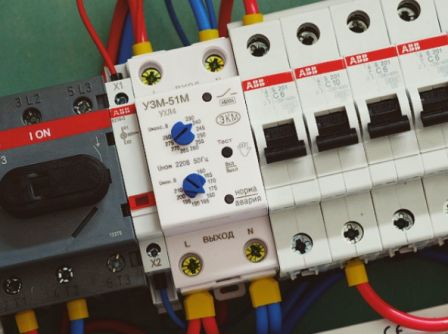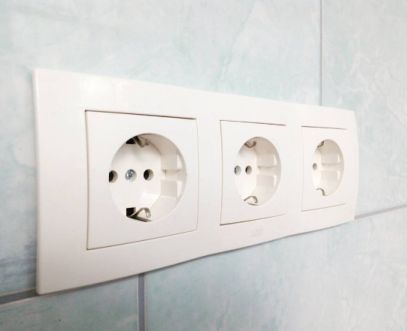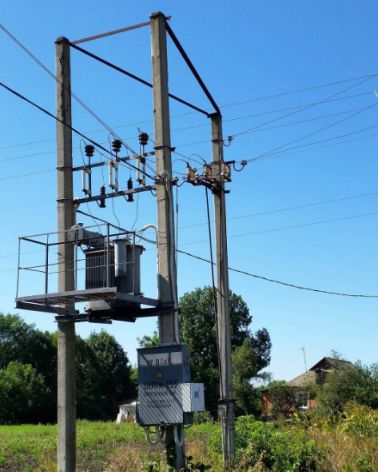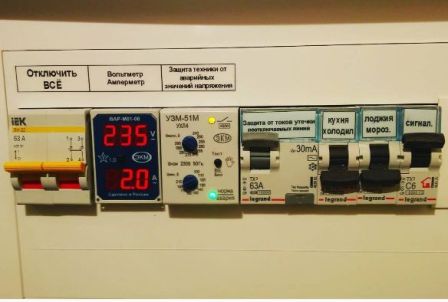Categories: Featured Articles » Electrician at home
Number of views: 40878
Comments on the article: 8
Zero line break protection
A broken ground wire in a three-phase electrical network is a dangerous phenomenon that can lead to various negative consequences for household electrical appliances, as well as for people who operate them. In this article, we will consider the consequences of a zero wire break with a specific example and the corresponding methods of protecting home wiring from a zero break.

The consequences of a zero wire break
As an example, consider an apartment building, powered by the most common TN-C-S grounding system. A system of this type provides grounding of the neutral of a power source - a substation transformer.
From the substation to the consumer, in this case, the house, electricity is supplied through four conductors - three phase conductors and a conductor, which combines the functions of a working neutral and protective grounding conductor.
After entering the building, the combined conductor is divided into a working neutral and protective conductor, and then distributed between the apartments.
Three phases the electric network when entering the house is distributed over an approximately equal number of apartments. But under normal operating conditions of the electric network, the load in the three phases is uneven, since apartment residents use electrical appliances in different ways, and at different time intervals the load in the phases is different, and significantly.
In this case, the phase voltage is almost equal, since the neutral wire plays the role of a balancer, reduces the so-called neutral point bias voltage to almost zero.
In the event of a break in the neutral wire on the power line, an imbalance immediately arises - there is a phase imbalance. In this case, in one phase, where the load is less, the voltage increases sharply, and on the loaded phase itself, on the contrary, it drops.
Moreover, depending on the bias, the voltage at the phases can range from several tens of volts to the linear voltage of a three-phase network - 380 V. In this case, everything depends on the magnitude of the bias of the phases of the electrical network.
See more about this here: What happens in the mains when a zero break

The consequences of voltage drops are probably known to everyone. Significant overvoltage in a household network will lead to the failure of almost all the equipment that is currently running on the network. Excessively low voltage in a few minutes will disable the compressor of the refrigerator or air conditioner, the electric motor of the washing machine and other electrical appliances that are structurally equipped with electric motors. An abnormal mode of operation of electrical appliances may result in their failure, followed by fire.
Failure of household appliances is not the worst. In the event of zero burnout before entering the house, that is, before dividing it into a ground and a ground conductor, phase voltage appears on all grounded elements of the equipment, household appliances. If you touch such electrical appliances, a person will be shocked.
If the house is sold potential equalization system, which provides for electrical connection with the grounding bus of all metal structural elements, metal pipelines, the probability of electric shock is reduced, since a person will not touch two points with different potentials.
But, as practice shows, such a system in most houses is not implemented, and if a dangerous potential appears on the case of an electrical appliance and a person touches this electrical appliance and a metal object with a different potential at the same time, the person will be shocked by electric current.

Zero break protection
How to protect yourself and household appliances from the above consequences? The main measure of protection against possible voltage surges is voltage relay installation at the inlet of the home switchboard. In the event of an excessive decrease or increase in voltage, the voltage relay instantly de-energizes the wiring, while protecting the electrical appliances included in the network.
Concerning grounding system TN-C-S, then there is no protection against the possible occurrence of a dangerous potential on the equipment case in the event of damage to zero to the point of separation.
In fact, if the power line is in an unsatisfactory condition and the probability of damage to the combined wire to the separation point in the house is high, then the operation of such grounding is dangerous. At any time, grounded equipment enclosures may be energized. Is there a way out in this situation?
Owners of apartments on the ground floor, as well as in private houses, can make an individual grounding circuit that will be electrically independent of the combined neutral conductor of the electrical network. In this case, the network will be TT configuration.
In the electric network, where implemented TT system, a break in the neutral wire does not lead to the appearance of a dangerous potential on the equipment case. But at the same time, a phase imbalance can occur, therefore the voltage relay in these networks must also be installed to protect household appliances.
In general, if we talk about the reliability of grounding in the network of the TN-CS system, then in this case we can guarantee the safe operation of grounded electrical appliances only if the supplying organization carries out periodic checks of the condition of the networks from the supply substation directly to the main distribution panel of the house and timely eliminates possible violations.
It should also be noted that both in the TT system and in the TN-C-S system, the protective earth that meets all requirements cannot provide absolute protection against electric shock in the event of a dangerous potential, therefore it is imperative to install it in the distribution panel residual current device.

In this case, in the event of a possible leakage of current to the grounded enclosure, the RCD will instantly de-energize the wiring. Some types of residual current circuit breakers have an additional function of protection against voltage surges, that is, such a device will combine the functions of two protective devices.
See also at e.imadeself.com
:
